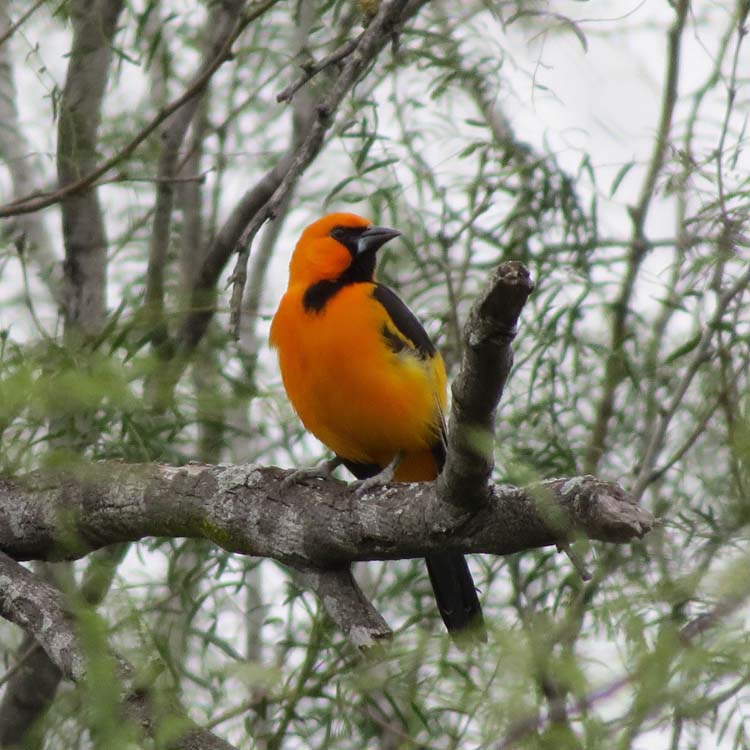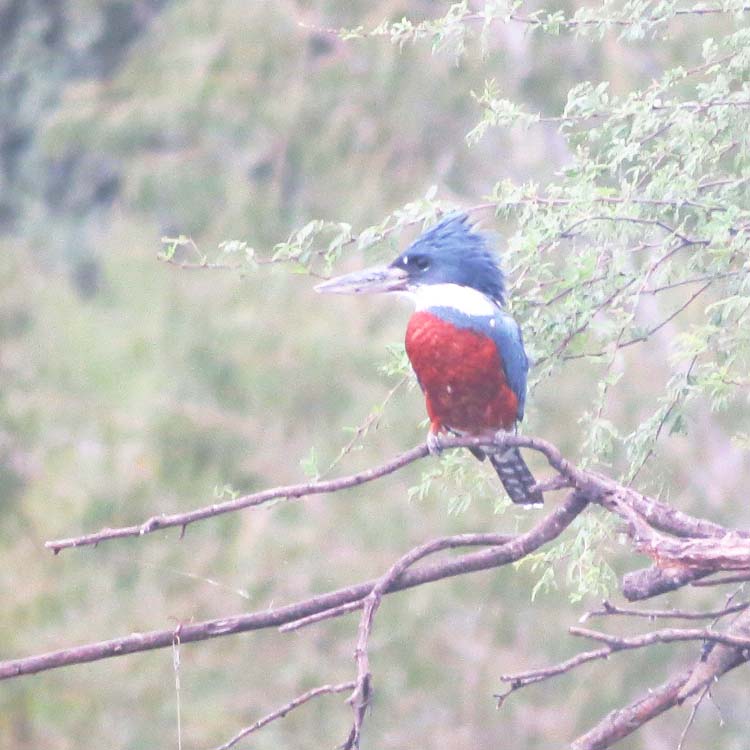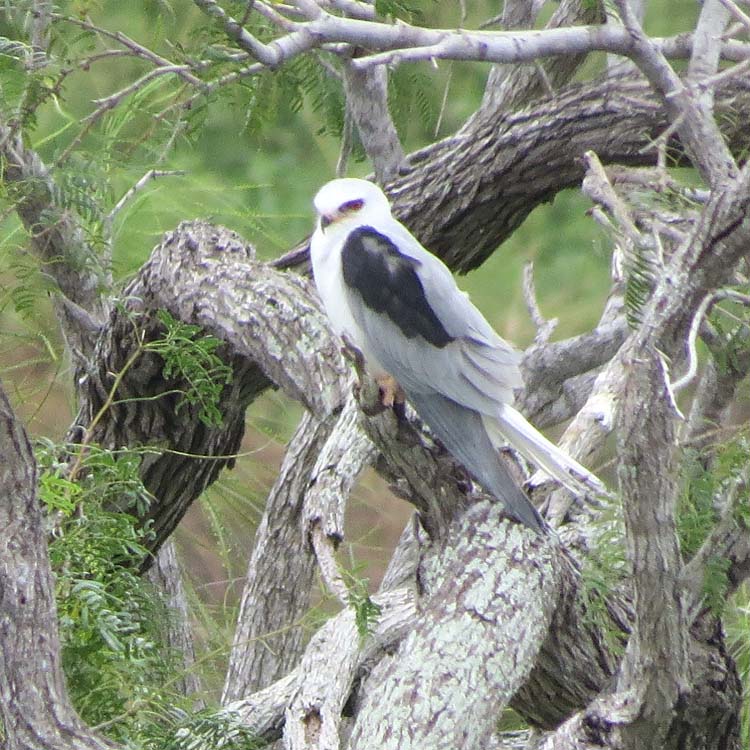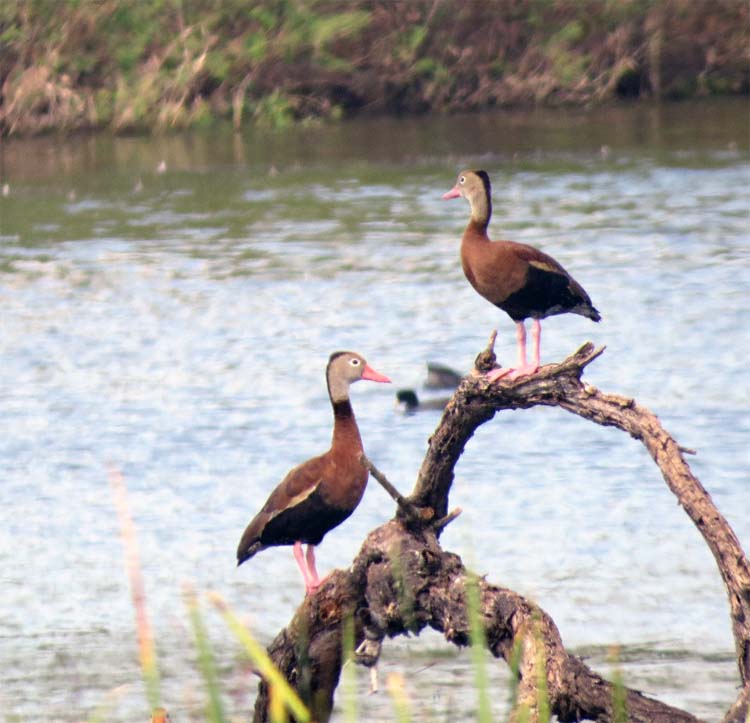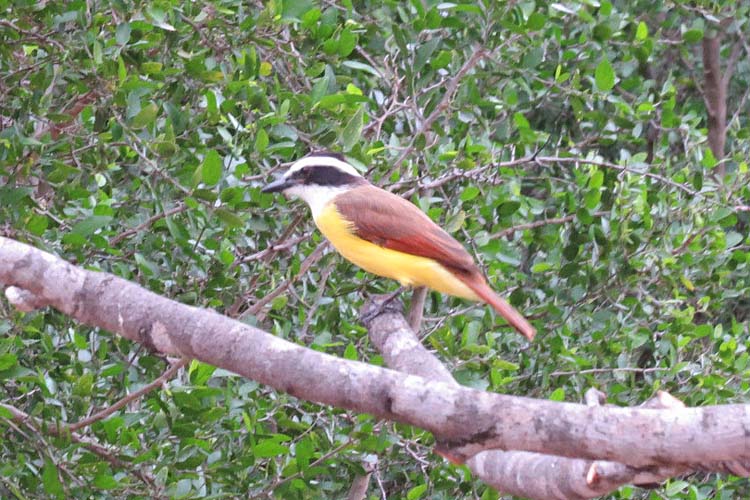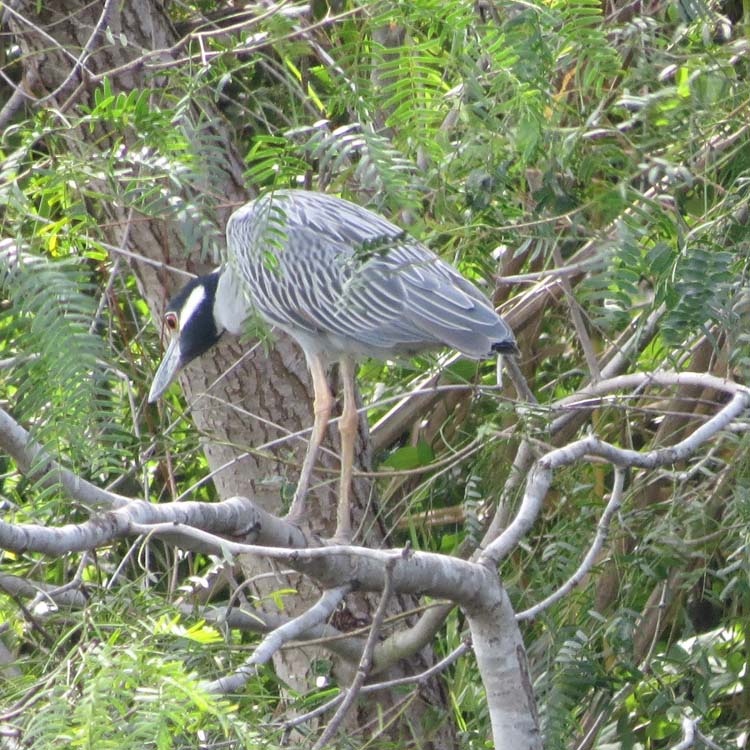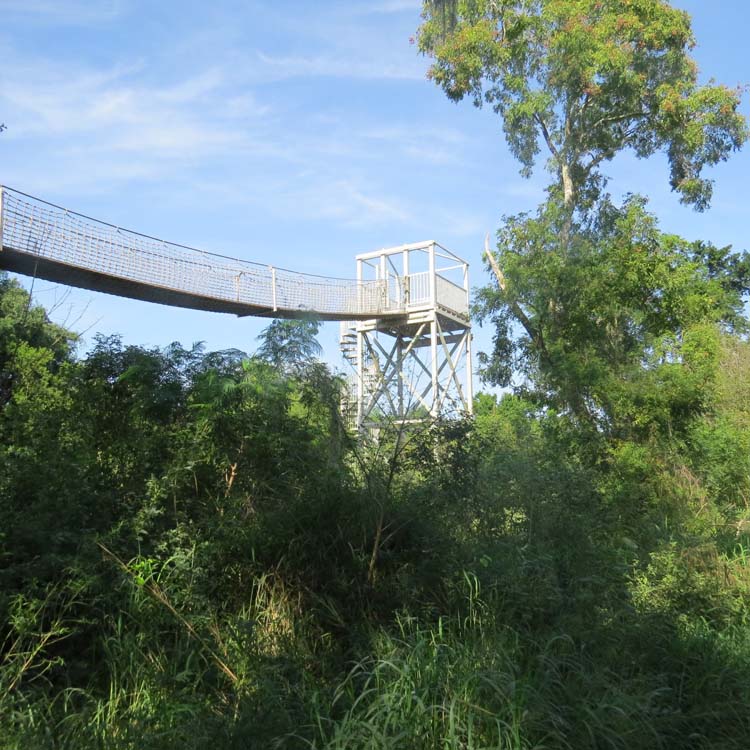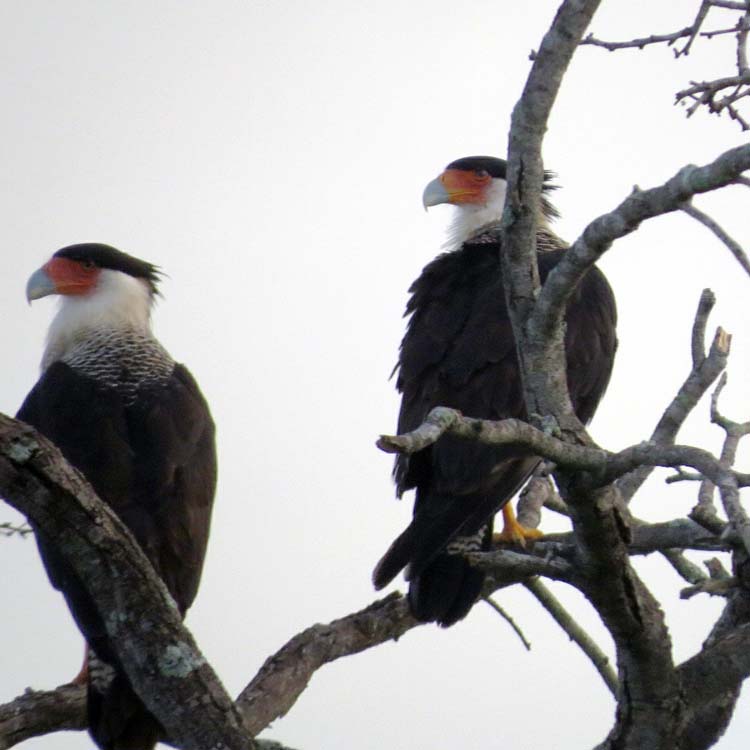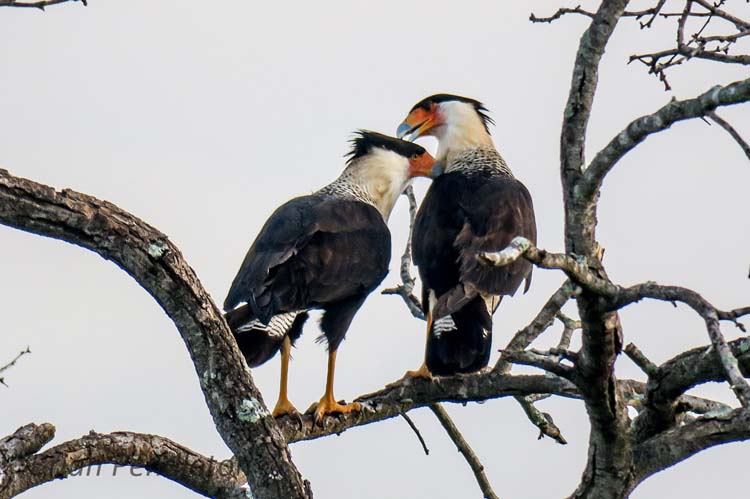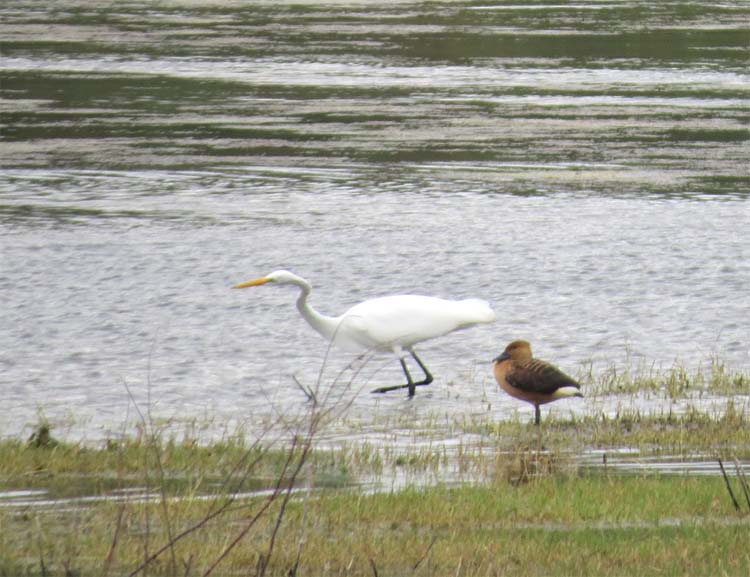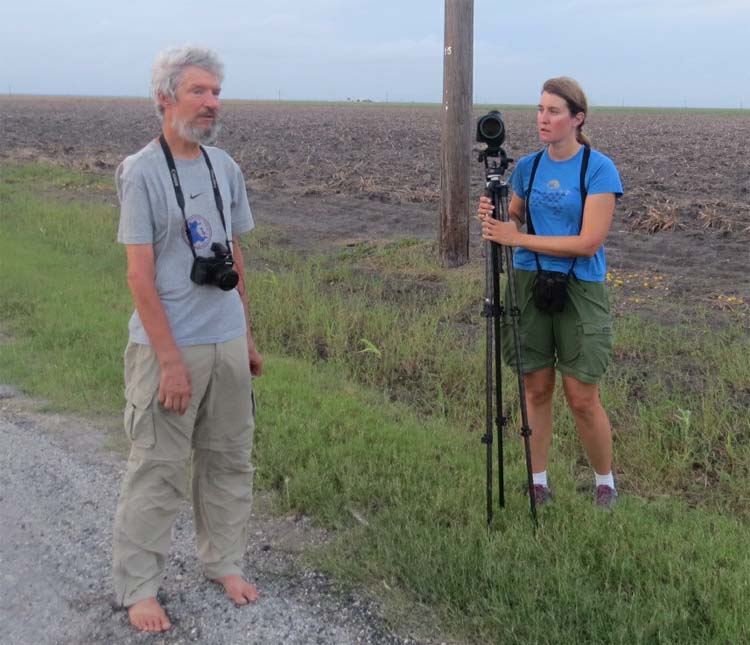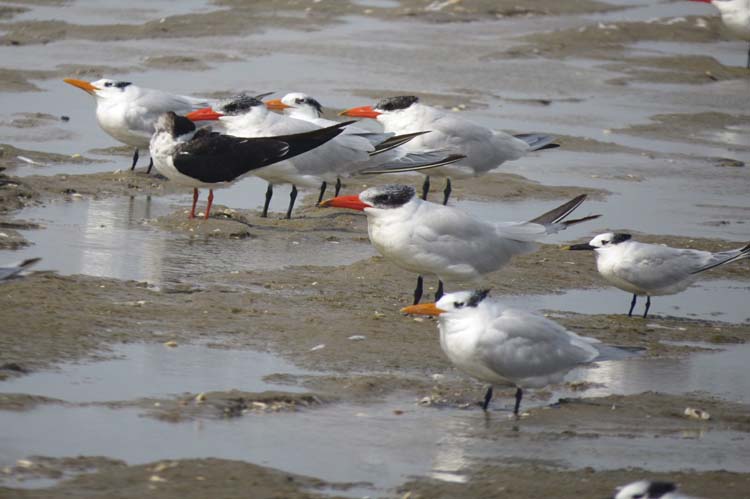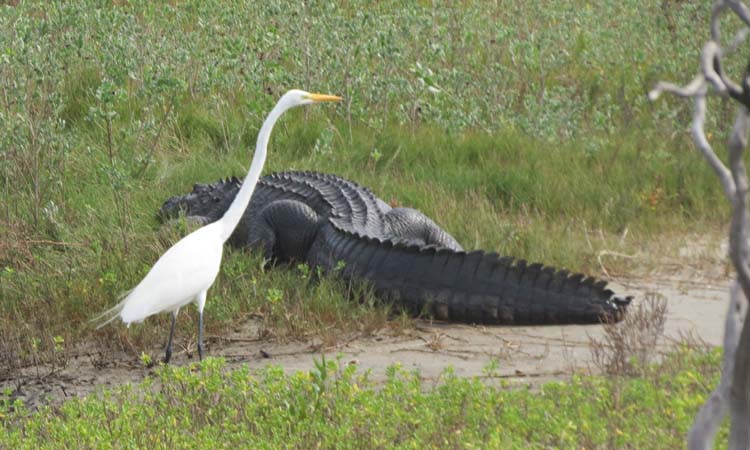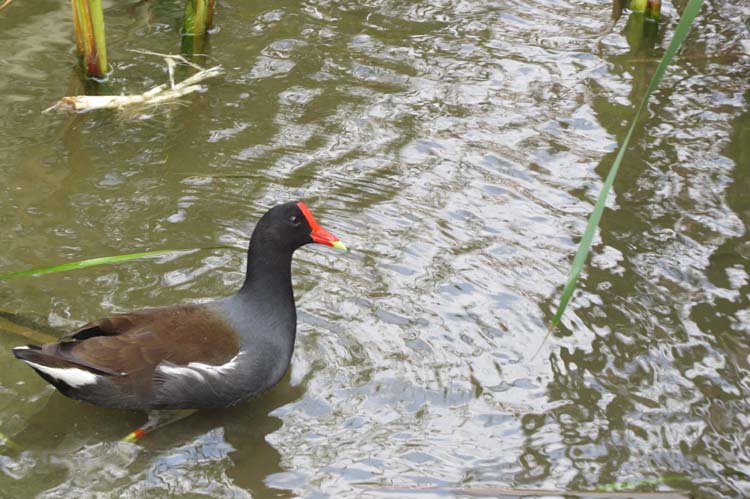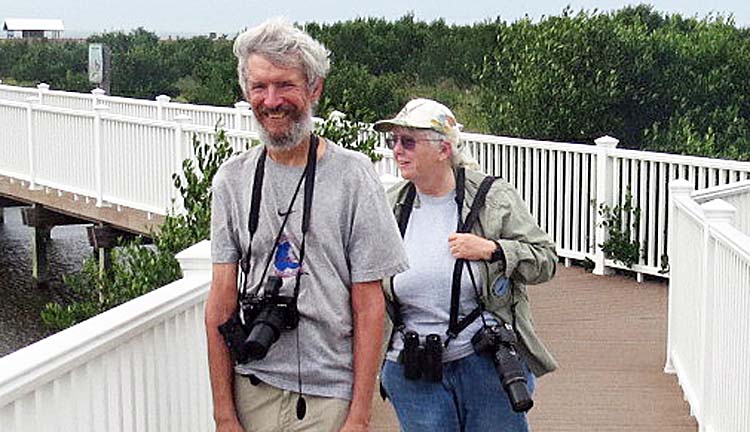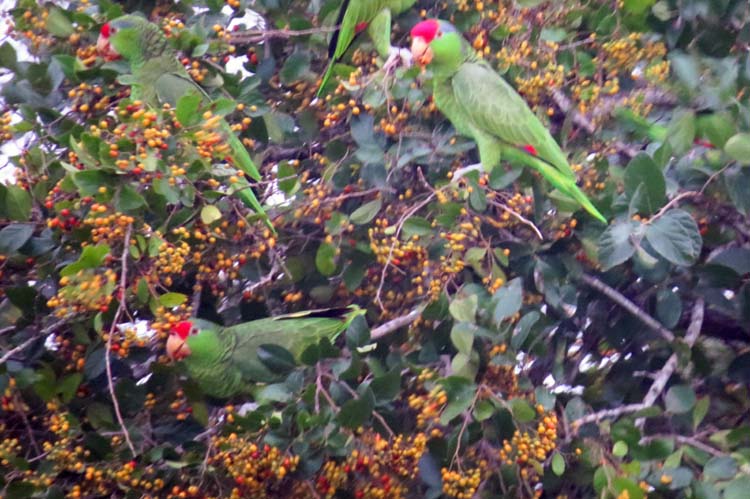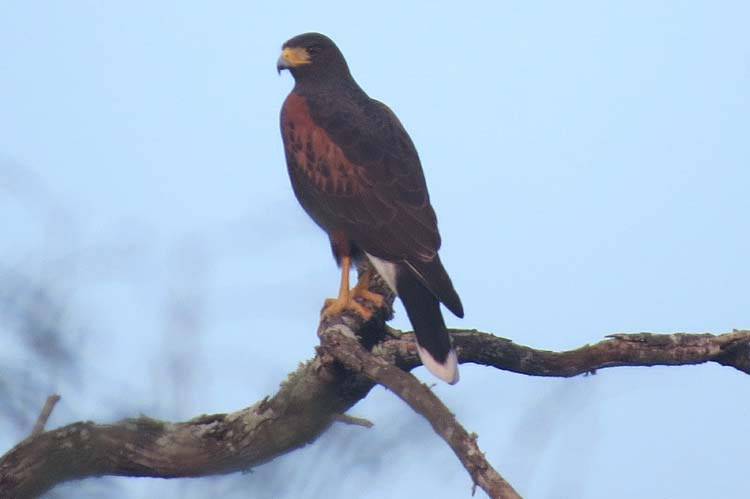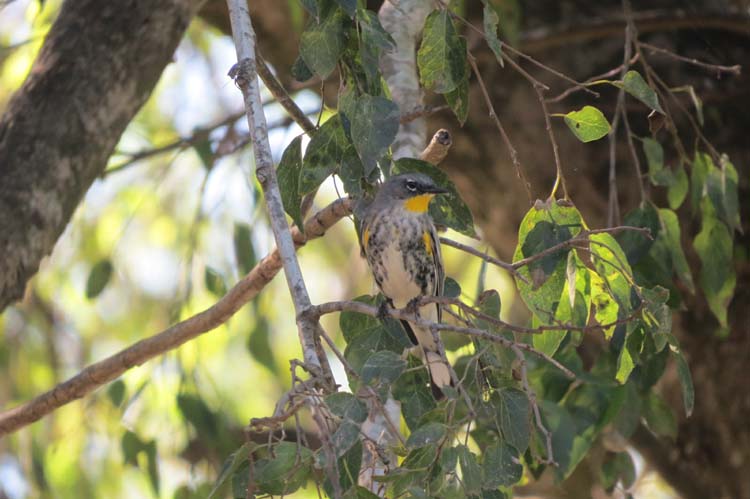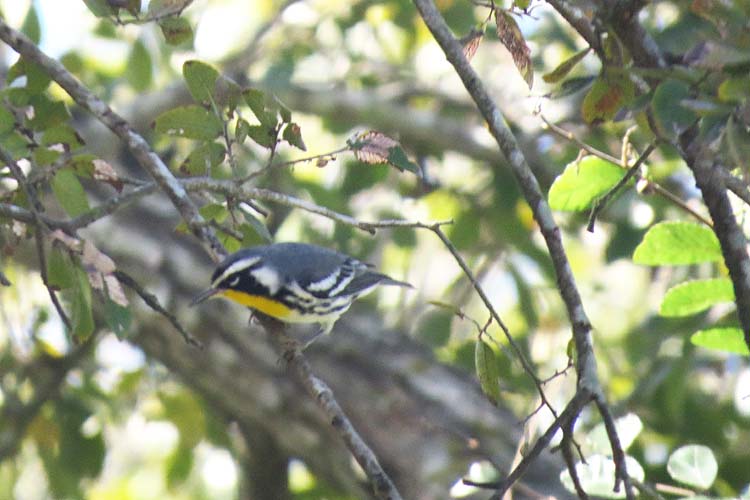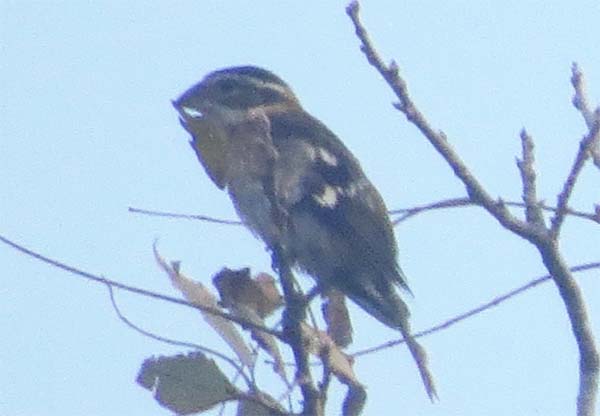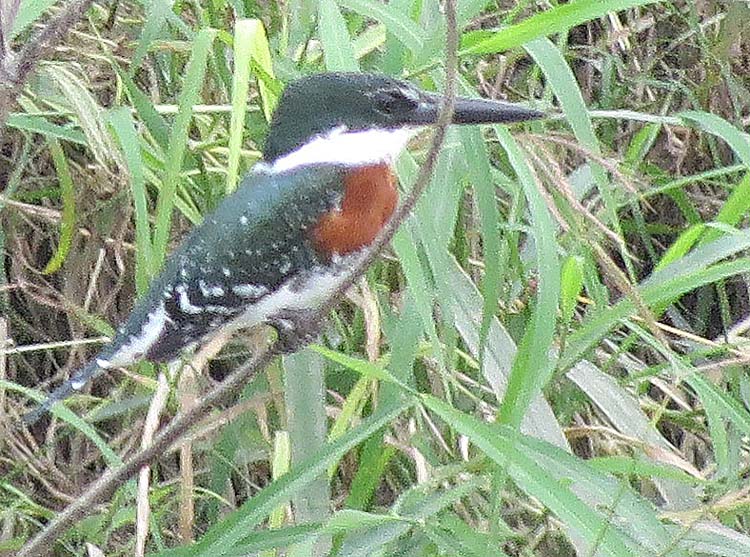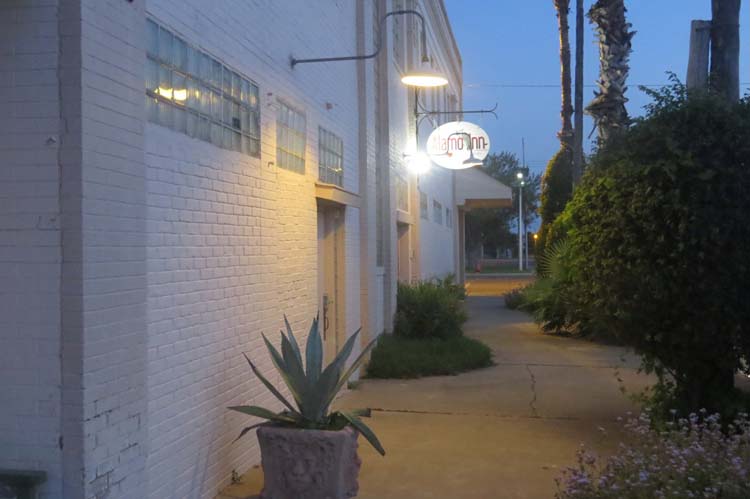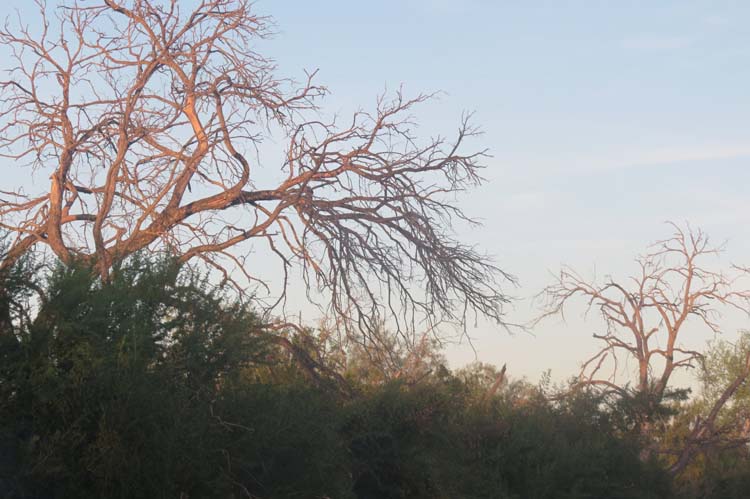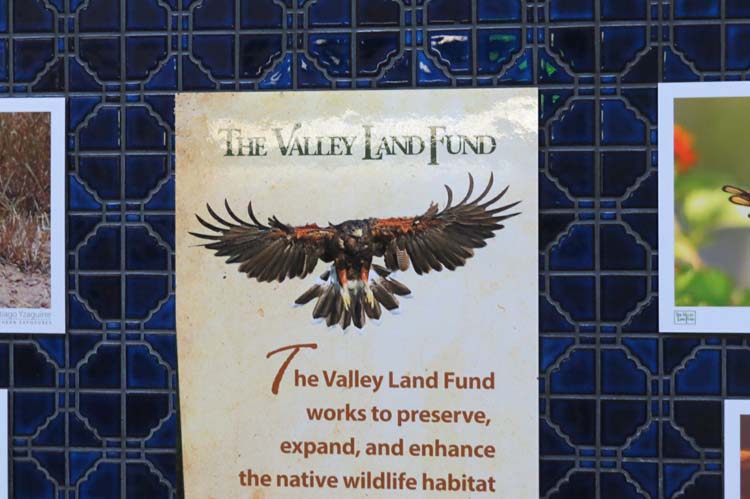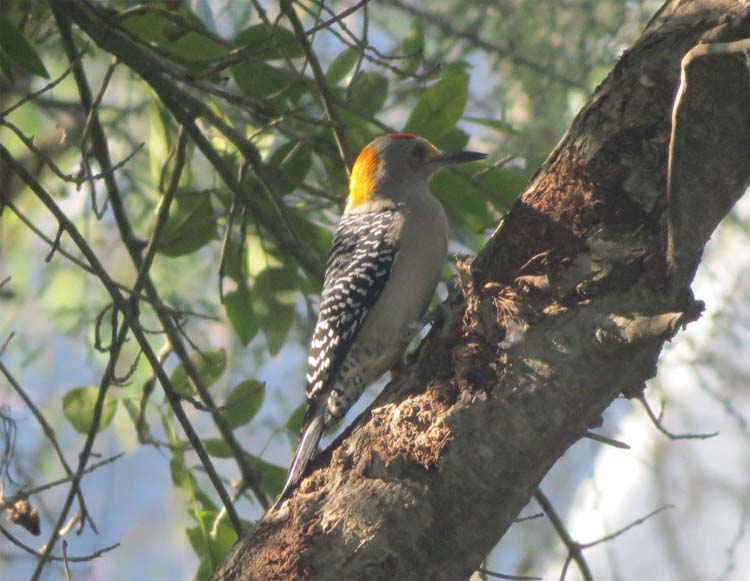We met at the Alamo Inn, and although it was a gorgeous, sunny day, the atrocious winds from the last two days hadn't abated much, so it wasn't as productive as I felt it could have been, but even so we had some nice things. On the way up to Brushline I careened onto Nittler Road (which had produced Sprague's Pipit a couple of weeks earlier), which was now passable and allowed for some views of several duck species in a flooded field. While we dipped on the Sprague's, several American Pipits flew over, but the best event involved two flocks of "white geese" that flew right overhead, with one line close enough to easily pick out a Ross' Goose in the mix, which was a life bird for Brad! Three White-tailed Kites also put on a nice show.
On to Brushline (after getting turned around at Hargill), where right as we hit the road from FM 490, a group of Pyrrhuloxias, three Clay-colored Sparrows, and a Verdin all sat right out in the sun for us! (I was scolding the Verdin for not doing that when I had other people with me in the past who so desperately wanted to see one... ;-) ) The seasonal wetlands were very productive with more pretty ducks (including a nice Cinnamon Teal), both Least and Pied-billed Grebes, Greater and Lesser Yellowlegs together for good comparison, and the occasional Harris' Hawk by the roadside. We hit the jackpot once again at a little spot that happened to have some reeds in it, where both an immature White-crowned Sparrow (which can be tough to get in Hidalgo County) and a Swamp Sparrow popped up! (It was also marshy enough to house a couple of Soras!) Approaching SR 186 the flock of Sandhill Cranes didn't disappoint, as there's usually a group hanging out right around there.
Clay-colored Sparrow
Female Pyrrhuloxia
Crossing the highway, we continued north, but the wind was kicking up and things were generally quieting down. Savannah Sparrows were out the yin yang, and we did have a couple of very confiding Loggerhead Shrikes! Another wetland (that had the road completely blocked a few weeks ago) had a stunning male Redhead along with the more expected ducks, and at one point a Roadrunner went darting across the road, along with a couple of covey of Bobwhite! We had some friendly Ruby-crowned Kinglets and Orange-crowned Warblers, but no unusual songbirds; even the usual flock of Brewer's Blackbirds at the Rio Beef Feedyard let us down. Coming down Rio Beef Road we had one Green Jay, and made a brief stop at the "South End Marsh" to troll for Virginia Rail, but nothing responded.
Two of the friendly shrikes along the way
Brad searching for that elusive Lincoln's Sparrow...
We decided to make a quick stop at Delta Lakes for necessities and check the overlook for anything of interest. The water level was down so there was some shorebird habitat, but the light was at a bad angle, so besides a couple of Stilt Sandpipers that were easy to ID, the others had to be let go as "peeps" (although we did have Least Sandpipers earlier). Best bird here was an Eared Grebe, but we also managed to add Laughing Gull, Caspian Tern, both cormorants, Black Vulture, and White Pelican to the list. On the way out of the park proper we had Mr. and Mrs. Belted Kingfisher on separate wires plunging away!
Headed home after that, where near a sugar cane burn we found a young White-tailed Hawk dutifully looking for Crispy Critters! :-) Bird List (84 species):
Black-bellied Whistling Duck
Greater White-fronted Goose
Snow Goose
Ross' Goose
Gadwall
American Wigeon
Mottled Duck
Blue-winged Teal
Cinnamon Teal
Northern Shoveler
Northern Pintail
Green-winged Teal
Redhead
Ring-necked Duck
Ruddy Duck
Northern Bobwhite
Least Grebe
Pied-billed Grebe
Eared Grebe
American White Pelican
Neotropic Cormorant
Double-crested Cormorant
Great Blue Heron
Great Egret
Snowy Egret
Cattle Egret
White-faced Ibis
Black Vulture
Turkey Vulture
White-tailed Kite
Northern Harrier
Accipiter sp. (I suspect we had both, but I can't be sure...)
Harris' Hawk
White-tailed Hawk
Crested Caracara
American Kestrel
Sora
Common Gallinule
American Coot
Sandhill Crane
Killdeer
Black-necked Stilt
Greater Yellowlegs
Lesser Yellowlegs
Least Sandpiper
Stilt Sandpiper
Laughing Gull
Caspian Tern
Rock Pigeon
Mourning Dove
Greater Roadrunner
Belted Kingfisher
Golden-fronted Woodpecker
Ladder-backed Woodpecker
Eastern Phoebe
Vermilion Flycatcher
Great Kiskadee
Loggerhead Shrike
White-eyed Vireo
Green Jay
Horned Lark
Tree Swallow
Verdin
House Wren
Marsh Wren
Ruby-crowned Kinglet
Blue-gray Gnatcatcher
Northern Mockingbird
Long-billed Thrasher
European Starling
American Pipit
Orange-crowned Warbler
Yellow-rumped Warbler
Common Yellowthroat
Clay-colored Sparrow
Lark Sparrow
Savannah Sparrow
Lincoln's Sparrow
Swamp Sparrow
White-crowned Sparrow
Northern Cardinal
Pyrrhuloxia
Red-winged Blackbird
Western Meadowlark
Great-tailed Grackle





